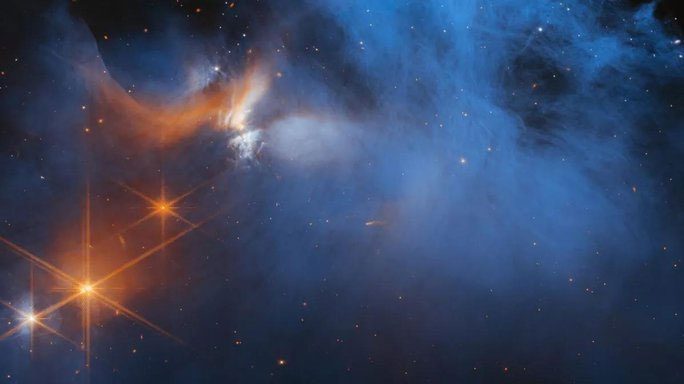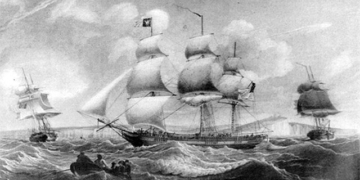The latest observations from the James Webb Space Telescope of an ultra-cold region of space containing the building blocks of life are expected to help scientists understand how habitable planets may have formed.
The James Webb Space Telescope, developed and primarily operated by NASA with support from ESA and CSA (the European and Canadian space agencies), has set a new record by observing and collecting astonishing data about the cold ice layer deep within the Chameleon I molecular cloud.

A thin blue molecular gas cloud with glowing spots from distant stars – (Image: James Webb/NASA/ESA/CSA).
According to Live Science, scientists used the infrared camera of James Webb to focus on the dark and cold regions of the molecular cloud located 500 light-years away from us.
They identified surprising elements in a place with a deadly temperature of minus 263 degrees Celsius, just a fraction above absolute zero.
These frozen molecules include carbonyl sulfide, ammonia, methane, methanol, and others.
According to a study recently published in the scientific journal Nature, these familiar molecules could one day become part of the hot core of a newborn star, as well as part of exoplanets, many of which may be habitable.
They also hold what is known as “the building blocks of life”, waiting to sow the seeds of life when a suitable planet is born: carbon, oxygen, hydrogen, nitrogen, and sulfur, a “molecular mixture of life” called COHNS.
“Our results provide insights into the initial dark chemical phase of ice formation on interstellar dust grains, which will grow into cm-sized pebbles from which planets form,” said lead author Melissa McClure from the Leiden Observatory in the Netherlands.
Molecular clouds like Chameleon I are star and planet nurseries. Over millions of years, the gases, ices, and dust within them will form larger structures. Some of these structures will heat up to become the cores of young stars.
As these young stars develop, they will attract more and more material towards themselves, growing hotter until they ultimately form a newborn star surrounded by a dense disk of gas and dust, where planets are conceived.
Astronomer McClure added: “These observations open a new window into the pathway of forming the simple and complex molecules necessary to create the building blocks of life.”
James Webb is the most advanced space telescope in the world, which, according to NASA’s statement, is not only tasked with searching for worlds from the early universe—billions of light-years away—but also helping humanity seek life in places that astronomers are skeptical about.


















































